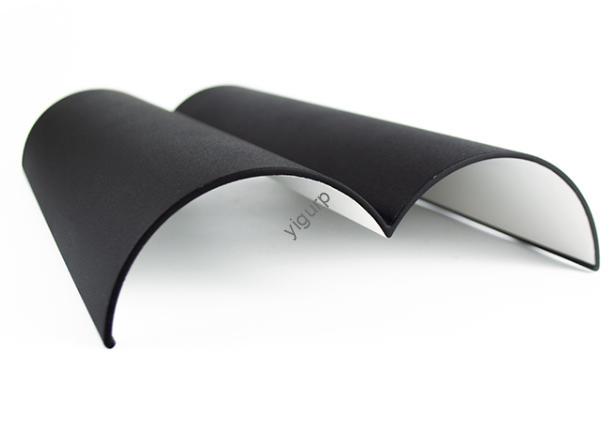Bending molding is a key process in sheet metal processing that shapes materials into desired angles and forms using pressure. It’s popular because it’s cost-effective, rapide, and doesn’t require mold opening—perfect for both prototyping and mass production. But to get the best results, choosing the right material is crucial. This guide breaks down the top materials for bending molding, leurs pros, usages, et des considérations clés pour vous aider à prendre des décisions éclairées.
An Overview of Bending Molding: Comment ça marche
Before diving into materials, let’s quickly understand how bending molding operates. Le processus repose sur déformation plastique—applying pressure to a sheet metal until it bends without breaking. For success, two factors matter most: the material’s ductilité (its ability to stretch without cracking) and proper bending parameters (like height and radius).
A basic rule for bending height: it should be at least 2× the material’s thickness + the bending radius. Par exemple, if you’re using a 2mm thick steel sheet with a 3mm bending radius, the minimum bending height is 2×2 + 3 = 7mm. This prevents twisting during forming. Aussi, the bending radius must be larger than the material’s minimum bending radius (a value that varies by material) to keep the bent part strong.
Top Materials for Bending Molding: Avantages, Usages, and Data
Not all materials work for bending molding—only those with good ductility. Below are the most common options, organized with key details to help you compare.
| Matériel | Propriétés clés | Minimum Bending Radius (for 1mm thick sheet) | Applications typiques | Cas réel |
| Acier | Forte résistance, faible coût, bonne ductilité | 1.5MM | Construction metal parts, électronique grand public, cadres automobiles | A car manufacturer uses 1.2mm thick steel sheets to bend door frames. The parts handle daily wear without bending or breaking, and steel keeps production costs 30% lower than using titanium. |
| Aluminium | Léger (1/3 le poids de l'acier), résistant à la corrosion, Duc | 1.0MM | Transport (vélos, pièces d'avion), conditionnement (canettes en aluminium), accessoires extérieurs | A bike brand uses 0.8mm aluminum sheets to bend handlebars. The lightweight material cuts the bike’s total weight by 15%, and its corrosion resistance means the handlebars don’t rust in rain. |
| Cuivre | Excellente conductivité électrique, ductilité élevée, malléable | 0.8MM | Electrical connections (fils, cartes de circuits imprimées), Pièces de plomberie | An electronics company bends 0.5mm copper sheets into connectors for smartphones. The copper’s conductivity ensures fast signal transfer, and its ductility lets the connectors fit into small phone casings. |
| Titane | Ultra-haute force, résistant à la corrosion (even in chemicals), biocompatible | 2.0MM | Aérospatial (rocket parts), dispositifs médicaux (implants), équipement marin | A medical firm uses 1.0mm titanium sheets to bend hip implants. Titanium’s strength supports body weight, and its biocompatibility means it doesn’t react with human tissue. |
Key Factors to Consider When Choosing Bending Molding Materials
Choosing a material isn’t just about its properties—you need to match it to your project’s needs. Here are four critical factors:
- Exigences de demande: If your part needs to conduct electricity (like a wire connector), cuivre est le meilleur choix. Pour les pièces légères (like airplane components), aluminium ou titane works better. À faible coût, pièces à haute résistance (like construction brackets), acier est idéal.
- Conditions environnementales: Will the part be exposed to water or chemicals? Aluminium et titane résister à la corrosion, so they’re great for outdoor or marine use. Acier may need a coating (like paint or zinc) Pour éviter la rouille.
- Cost and Availability: Acier is the cheapest and most easy-to-find option—perfect for large-scale production. Titane is expensive (about 5× the cost of steel) but worth it for high-performance parts (comme des composants aérospatiaux).
- Bending Difficulty: Cuivre et aluminium are easy to bend—they require less pressure and are less likely to crack. Acier et titane are harder, so you may need specialized equipment (like a high-pressure bending machine) pour des draps épaissants.
Yigu Technology’s Perspective on Bending Molding Materials
À la technologie Yigu, we focus on matching clients with the right bending materials to balance performance and cost. For most consumer goods (like electronics cases), Nous recommandons aluminium—it’s lightweight, résistant à la corrosion, et rentable. Pour les pièces industrielles (like construction beams), acier is our go-to for its strength and low cost. Pour les projets haut de gamme (Comme les implants médicaux), Nous utilisons titane to meet strict safety and durability standards. We also help clients optimize bending parameters (like radius and height) to reduce waste—ensuring every part meets quality requirements.
FAQ About Materials for Bending Molding
1. Can I use stainless steel for bending molding?
Oui! Stainless steel is a type of steel with added chromium, le rendre plus résistant à la corrosion. It has good ductility, so it’s great for parts like kitchen sinks or outdoor furniture. Its minimum bending radius is about 1.8mm (for 1mm thick sheets).
2. Is it possible to bend very thin sheets (0.1mm d'épaisseur) of these materials?
Oui, but you need to be careful. Feuilles minces (like 0.1mm aluminum or copper) are easy to bend but may wrinkle. Use a bending machine with soft jaws (to avoid damaging the sheet) and keep the bending radius small (Par exemple, 0.5MM pour l'aluminium) Pour de meilleurs résultats.
3. Which material is best for bending parts that need to be painted?
Acier est le meilleur choix. It adheres well to paint and coatings, and the paint adds extra rust protection. Aluminum can also be painted, but it may need a primer first to help the paint stick. Copper and titanium are less commonly painted, as their natural properties (like conductivity or biocompatibility) may be affected.
